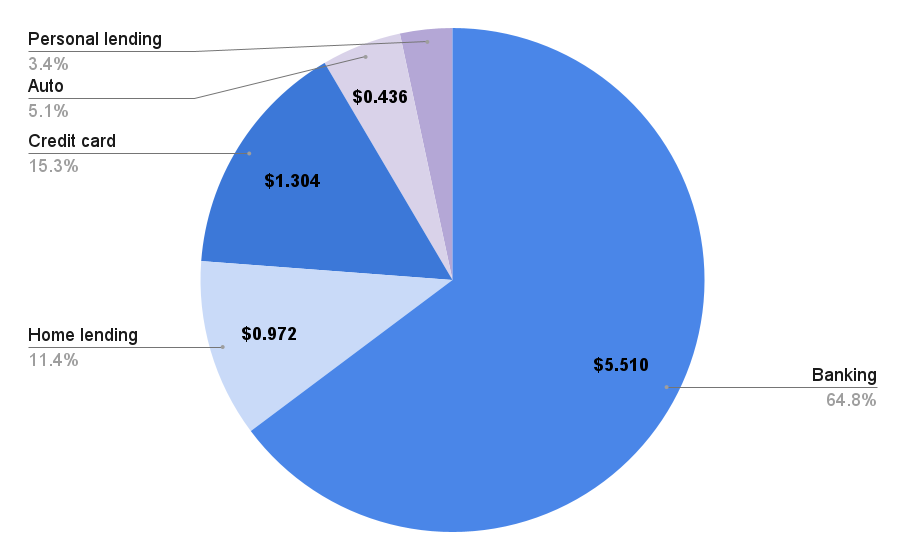Rising interest rates and a shrinking branch network are cutting into Wells Fargo’s mortgage business, and bank executives say they’re fine with that.
In a shifting real estate market, the guidance and expertise that Inman imparts are never more valuable. Whether at our events, or with our daily news coverage and how-to journalism, we’re here to help you build your business, adopt the right tools — and make money. Join us in person in Las Vegas at Connect, and utilize your Select subscription for all the information you need to make the right decisions. When the waters get choppy, trust Inman to help you navigate.
With rising interest rates and a shrinking branch network cutting into its mortgage business, Wells Fargo’s credit card business brought in more revenue than home loans during the second quarter — and bank executives say they’re fine with that.
Wells Fargo generated $3.12 billion in second-quarter net income, down 14 percent from the first quarter and 48 percent from a year ago, the San Francisco-based bank reported Friday. Revenue declined to $17.03 billion, down 3.2 percent from quarter-to-quarter and 16 percent from a year ago.
Wells Fargo mortgage originations by channel
Wells Fargo mortgage originations by channel in billions of dollars Source: Wells Fargo investor presentations
Wells Fargo originated $34.1 billion in mortgages during the first three months of the year, down 10 percent from the first quarter and 36 percent from a year ago.
Originations made by Wells Fargo’s retail branches were down even more sharply falling 19 percent quarter-over-quarter and 47 percent year-over-year to $19.6 billion.
As of June 30, Wells Fargo operated 4,660 retail bank branches, 45 less than it had on March 31 and 218 fewer than at the same time a year ago.
The bank has also been shedding employees, with headcount falling by 2,904 during the second quarter and 15,522 over the last 12 months to 243,674.

Charles Scharf
When asked about the bank’s strategy in mortgage lending on a call with investment analysts, Wells Fargo CEO Charlie Scharf conceded, “If you just go back and look at how big we were in the mortgage business, we were a hell of a lot bigger than we are today.”
Under the leadership of Kristy Fercho, who took over as head of Wells Fargo Home Lending in 2020, Scharf said Wells Fargo has been “reassessing what it makes sense to do [in mortgage lending], how big we want to be both in the context of what our focus should be … our primary focus should be on service and serving our own customer base.”
As mortgage originations sputtered at branch offices, Wells Fargo did ramp up its purchases of loans originated by correspondent lenders which grew by 5 percent from the first quarter to $14.5 billion. But that was an 11 percent drop from a year ago when the bank acquired $16.3 billion in mortgages through its correspondent channel.
“We’re not interested in being extraordinarily large in the mortgage business, just for the sake of being in the mortgage business,” Scharf said. “We’re in the home lending business because we think home lending is an important product for us to talk to our customers about. And that’ll ultimately dictate the appropriate size of it.”
Wells Fargo announced it would cut expenses in its home lending division when it reported first-quarter results in April. Although it hasn’t released the exact number of jobs eliminated from the company’s home lending division so far, several mortgage lenders and real estate companies have downsized in recent weeks, as the Federal Reserve’s efforts to combat inflation by raising interest rates raise worries about a decline in home sales and a potential recession.
Investors seem comfortable with the bank’s strategy, with shares in Wells Fargo up more than 6 percent after Friday’s earnings release and more than 12 percent since hitting a 52-week low of $36.54 on June 16.
Wells Fargo consumer banking and lending revenue

Revenue, in billions of dollars, generated Wells Fargo’s consumer banking and lending segment during the second quarter of 2022. Source: Wells Fargo investor presentation
Mortgage lending represents a shrinking slice of the revenue pie within Wells Fargo’s consumer banking and lending segment which includes four business lines: consumer and small business banking, home lending, credit cards, auto loans and personal lending.
The $979 million in second-quarter revenue generated by home lending represented 11.4 percent of the $8.507 billion in revenue generated by Wells Fargo’s consumer banking and lending segment. That’s down from 17.4 percent during the first quarter.
The bank attributed the 53 percent year-over-year decline in revenue from home lending primarily to lower originations and gain on sale margins and lower revenue from the re-securitization of loans purchased from securitization pools. Those decreases were partially offset by higher mortgage servicing income.
Credit cards surpassed mortgage lending as the second-biggest source of revenue within the consumer banking and lending segment, bringing in $1.3 billion in revenue or 15.3 percent of the pie.
Scharf noted that Wells Fargo this week launched its fourth new credit card offering in the past year, Wells Fargo Autograph, “reflecting our momentum in growing our consumer credit card business, with new accounts of over 60 percent from a year ago. We’re focused on delivering competitive offerings and our new reward card provides three times points across top spending categories, including restaurants, travel and gas stations. This is the first of several rewards-based cards we plan to introduce.”
Get Inman’s Extra Credit Newsletter delivered right to your inbox. A weekly roundup of all the biggest news in the world of mortgages and closings delivered every Wednesday. Click here to subscribe.
Email Matt Carter



 Are You Interested in West Eleventh Residences Miami?
Are You Interested in West Eleventh Residences Miami? Are You Interested in ONE Park Tower by Turnberry?
Are You Interested in ONE Park Tower by Turnberry? Are You Interested in Diesel Wynwood Condominium?
Are You Interested in Diesel Wynwood Condominium? Are You Interested in Five Park Miami Beach?
Are You Interested in Five Park Miami Beach? Are You Interested in Cipriani Residences Miami?
Are You Interested in Cipriani Residences Miami? Are You Interested in Bentley Residences Miami?
Are You Interested in Bentley Residences Miami? Are You Interested in Baccarat Residences Brickell?
Are You Interested in Baccarat Residences Brickell? Are You Interested in Aria Reserve Miami?
Are You Interested in Aria Reserve Miami? Are You Interested in 888 Brickell Dolce & Gabbana | Miami?
Are You Interested in 888 Brickell Dolce & Gabbana | Miami? Are You Interested in 600 Miami WorldCenter?
Are You Interested in 600 Miami WorldCenter? Are You Interested in HUB MIAMI RESIDENCES?
Are You Interested in HUB MIAMI RESIDENCES? Are You Interested in WALDORF ASTORIA RESIDENCES?
Are You Interested in WALDORF ASTORIA RESIDENCES?